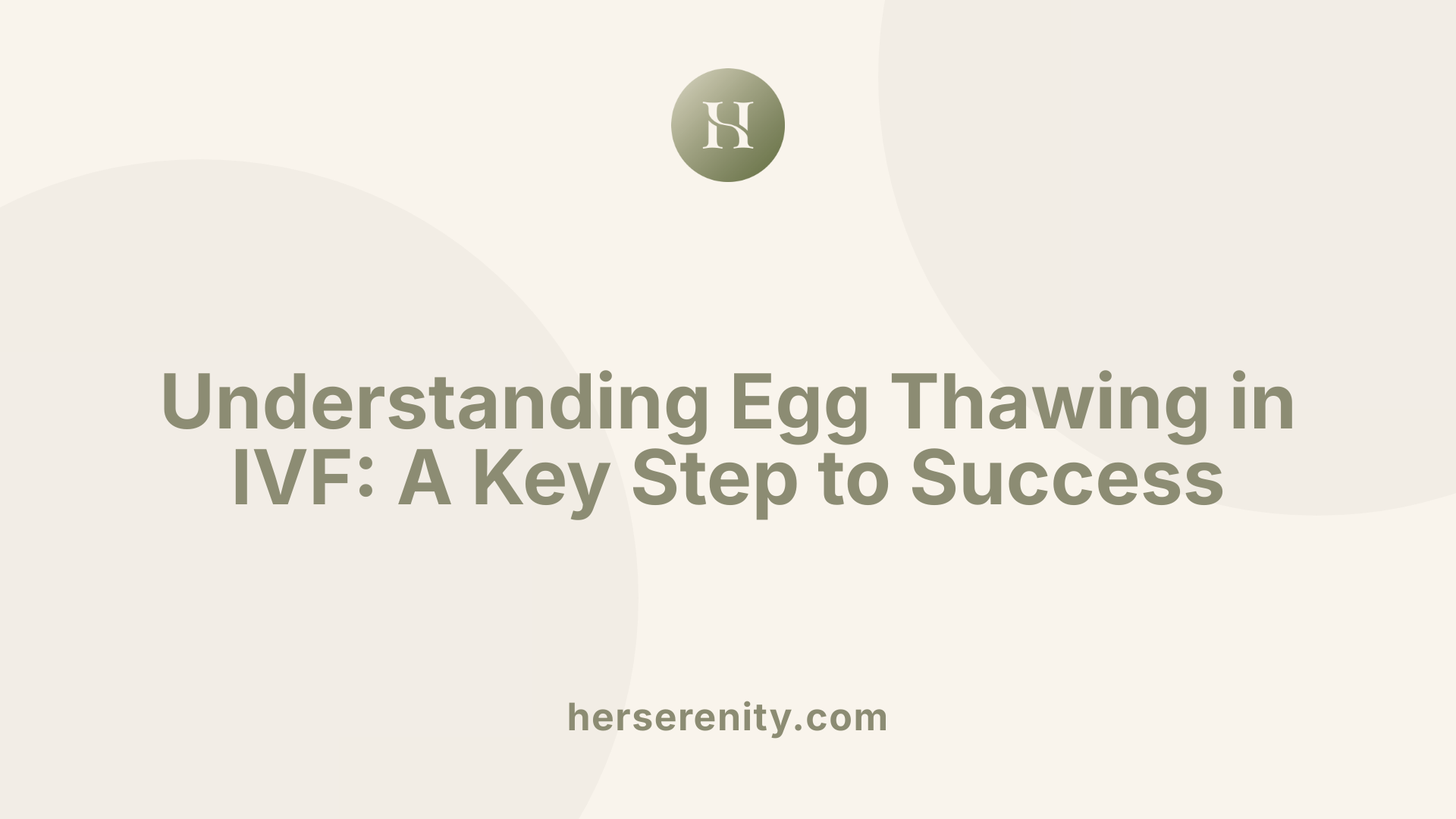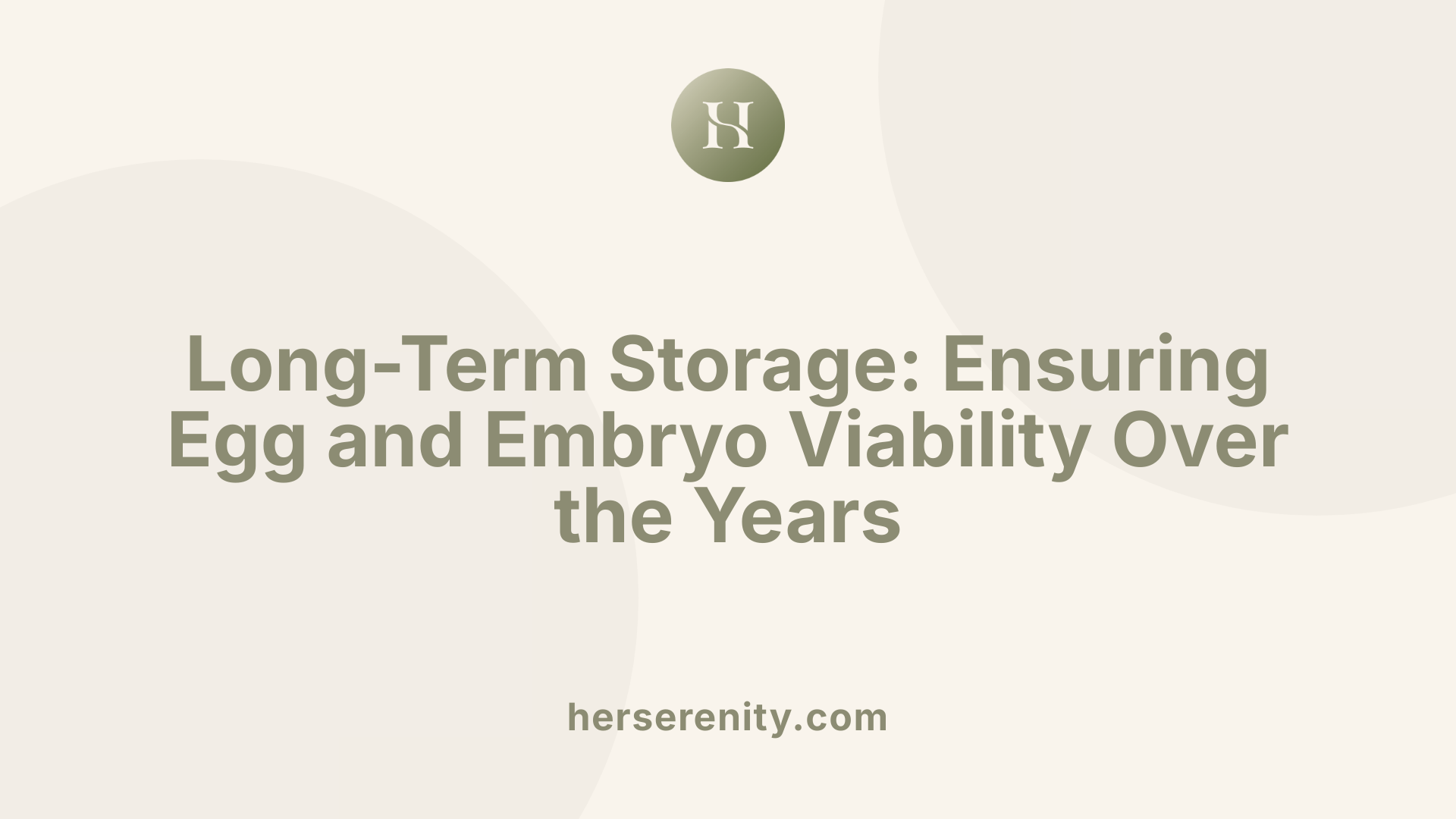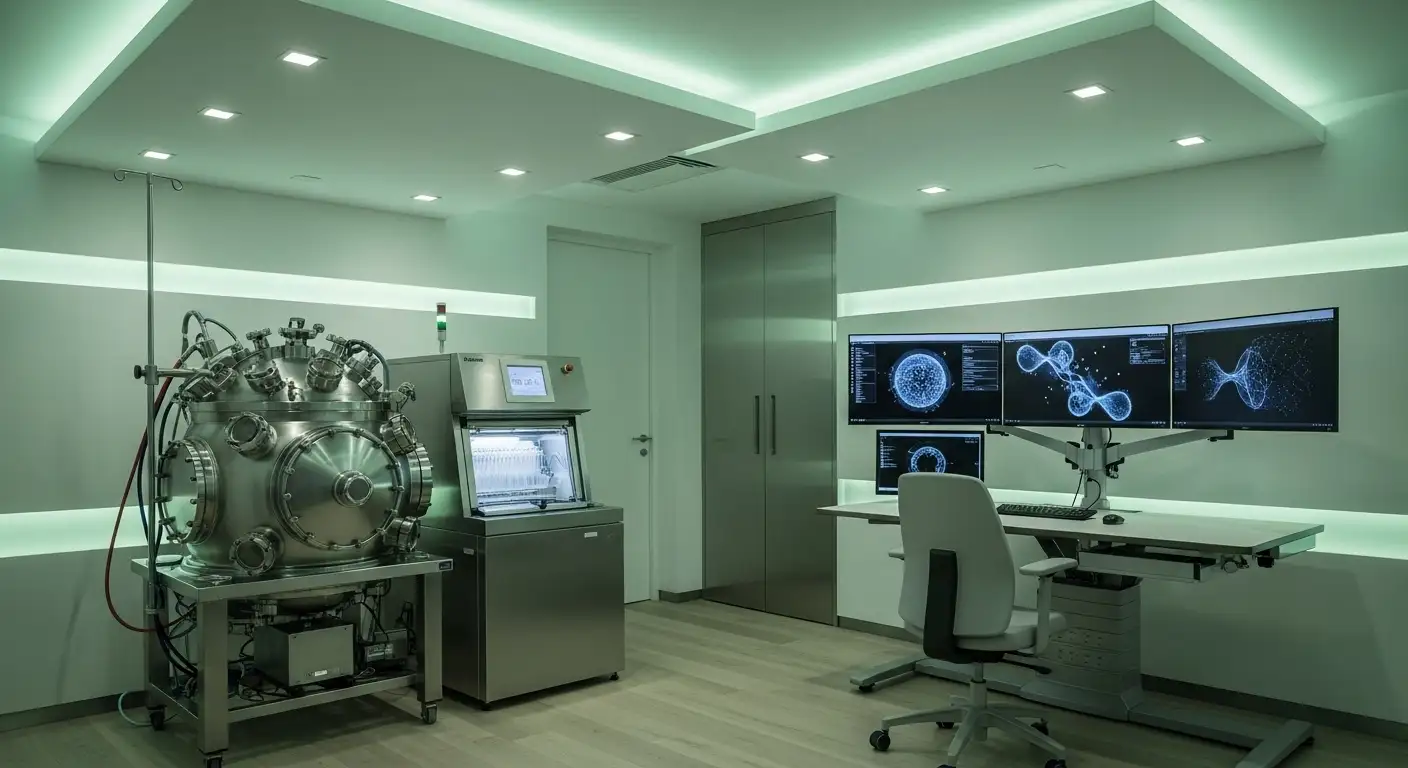How long does egg thawing take before transfer?
Timing and Techniques in Egg Thawing for IVF Success

Understanding the Egg Thawing Process in IVF
One of the critical steps in IVF with frozen eggs is the thawing process, which must be executed swiftly and precisely to ensure high survival and successful subsequent transfer. This article explores the timeline, procedures, and scientific insights surrounding egg thawing, emphasizing how these factors influence overall IVF success.
Overview of Egg Thawing in IVF

What is the purpose of egg thawing in IVF?
Egg thawing is a crucial step in the IVF process where previously frozen eggs are carefully warmed to allow fertilization and subsequent embryonic development. This procedure enables fertility clinics to preserve eggs at an earlier stage of maturity, giving women the flexibility to delay conception or manage fertility concerns. When the eggs are thawed, they are prepared for fertilization, either through natural sperm interaction or assisted techniques like ICSI (intracytoplasmic sperm injection). Successful thawing ensures that viable eggs can be fertilized effectively, ultimately leading to the creation of embryos suitable for transfer.
When does thawing occur relative to embryo transfer?
In most IVF cycles involving frozen eggs, thawing occurs on the same day as the embryo transfer. The timing is coordinated so that the embryo remains at an optimal developmental stage during transfer into the uterus. Generally, eggs are thawed a few hours before the transfer, allowing embryologists a window to assess their viability through microscopic evaluation.
This process involves warming the eggs in specific solutions, gradually rehydrating them, and then preparing them for fertilization. In cases where embryos were frozen at the blastocyst stage, the thawing process is also timed precisely to match the scheduled transfer, which typically takes place 5-6 days after fertilization or egg retrieval.
Why is timing important in egg thawing for better outcomes?
Timing plays a vital role in maximizing the success of IVF with frozen eggs. Proper synchronization ensures that the embryonic development aligns with the uterine lining's receptivity. Thawing too early or too late can lead to developmental mismatches, decreasing the chances of successful implantation.
Thawed eggs are usually evaluated immediately to confirm viability. Those that re-expand fully and show good cellular integrity are selected for fertilization. The entire process—from thawing to embryo transfer—is planned meticulously, often within a 1-2 hour window, to ensure optimal conditions for implantation.
By precisely timing the thawing process, clinics aim to preserve embryo quality and coordinate it with the natural or hormone-prepared cycle, thereby enhancing pregnancy rates.
How long does the embryo thawing process take?
The embryo thawing process primarily involves devitrification, which is the rapid warming of vitrified embryos to recover their biological activity. This process typically takes around 15 minutes, making it relatively quick.
Prior to thawing, certain tools and equipment, such as warming media and transfer devices, need to be prepared and maintained at a temperature of 37ºC to ensure proper embryo recovery. The timing of thawing and transfer can vary depending on the specific schedule, whether on the same day or earlier, based on embryo characteristics and clinical protocols.
Overall, advances in vitrification and devitrification techniques have significantly increased embryo survival rates and have made the thawing process efficient and reliable.
Scientific Insights Into Egg Thawing Techniques

The vitrification method and its efficiency
Vitrification is a state-of-the-art technique used to freeze eggs and embryos rapidly, preventing the formation of damaging ice crystals. This method involves swiftly cooling the cells to -196ºC in less than a second, transforming them into a glass-like state. This rapid process ensures minimal physical and cellular damage, resulting in very high survival rates upon thawing—often close to 95%. Vitrification is preferred over traditional slow-freezing because of its superior effectiveness in maintaining embryo viability and reducing cryo-injury.
The process of devitrification and its rapid nature
Devitrification is the warming phase during which frozen embryos are returned to physiological temperatures. This process involves quickly raising the temperature of the vitrified embryo from -196ºC to 37ºC in under one second. This rapid heating process is crucial because it prevents the formation of ice crystals that could harm the embryo. The immediate warming, known as devitrification, is a critical step that allows the embryo to regain biological activity once rehydrated, making it ready for transfer.
Survival and viability rates of thawed eggs
The transition from vitrification to thawing is designed to maximize embryo survival. Typically, over 95% of vitrified embryos survive the thawing process. When embryos survive and fully re-expand after warming, it indicates they are viable and have a good chance of leading to a successful pregnancy. If an embryo does not survive or re-expand, it cannot be used for transfer. Moreover, in cases where embryos are thawed and later need to be re-vitrified, they can often be successfully re-frozen if they have maintained viability, ensuring flexibility in treatment scheduling.
The overall success of egg thawing relies on the precision of these rapid cooling and warming techniques, which are continually refined. Advances in vitrification and devitrification methods have significantly improved outcomes, making frozen embryo transfer (FET) a reliable and effective option for many patients.
| Aspect | Details | Additional Notes |
|---|---|---|
| Thawing time | About 15 minutes | From removal to warming completion |
| Survival rate | Over 95% | Higher than traditional slow freezing |
| Post-thaw viability | Re-expansion signals survival | Indicates embryo is alive |
| Re-freezing | Possible after successful thaw | Maintains flexibility for treatment |
| Overall process | Rapid warming via devitrification | Essential to preserve embryo integrity |
Steps Involved in Egg Thawing Procedure
What are the typical steps involved in the embryo thawing process?
The embryo thawing process is a carefully controlled procedure that ensures the survival and viability of the embryos for successful transfer. It begins with the removal of the cryopreserved embryos from long-term storage in liquid nitrogen. This storage method preserves the embryos at extremely low temperatures, effectively pausing biological activity.
Once removed, the embryos are prepared for warming. The process involves grasping the straw containing the embryos with forceps and holding it in the air for about 40 seconds to start the thawing. After this initial step, the straw is plunged into room temperature water, which helps in gradually warming the contents. The embryos are then expelled from the straw into a dish at room temperature.
Initially, the embryos may appear to shrink due to the sucrose-based diluents used in cryopreservation. To prevent damage and facilitate rehydration, they are usually washed in drops of culture medium, such as M2, with each wash lasting a few minutes. During these washes, cryoprotectants are gradually removed or replaced, helping the embryo recover from the freezing process.
As the embryos rehydrate and emerge from the cryoprotectants, they are carefully examined under a microscope to assess their viability. Successful thawing is indicated by the embryo’s full re-expansion and normal morphology. If the embryos appear healthy and viable after this assessment, they are prepared for subsequent steps, which typically include fertilization (if not already fertilized) or direct transfer into the uterus for implantation.
This rapid yet gentle thawing process is crucial for maintaining embryo integrity and maximizing chances for a successful pregnancy. Timing is important; the entire process usually takes less than an hour, with the optimal window for transfer often scheduled shortly after thawing to align with endometrial receptivity.
Timing and Coordination of Egg Thawing for Transfer
How long before embryo transfer are embryos thawed?
Embryos are generally thawed shortly before the scheduled transfer, often within a few hours. The entire thawing process is rapid, typically taking around 15 minutes. During this period, the embryo is gradually warmed from cryogenic temperatures, such as -196ºC, to 37ºC, in order to restore biological activity.
The process begins with carefully placing the frozen embryo into a series of warming solutions that help remove cryoprotectants and prevent ice crystal formation. Once warmed, the embryo is rehydrated and assessed for viability through microscopic examination.
Timing the thawing precisely is crucial. Embryologists usually perform this just hours before the transfer to ensure the embryo is at the optimal state for implantation. This approach minimizes the risk of developmental out of sync with the uterine lining and maximizes the chances of pregnancy success.
In summary, embryos are thawed within a short window prior to transfer—generally a few hours—allowing enough time for recovery and readiness for implantation. Proper coordination of this timing is a vital part of the IVF process, helping to align embryo development with the patient's cycle or treatment protocol.
Impact of Thawing Duration on IVF Outcomes
How long does the embryo thawing process take?
The embryo thawing process mainly involves devitrification, which is the swift warming of vitrified embryos to restore their biological activity. This critical step typically lasts about 15 minutes, ensuring minimal stress on the embryo while maximizing survival chances.
During devitrification, embryos are removed from liquid nitrogen storage and immersed in warming solutions at 37ºC. These solutions help gradually rehydrate the embryo and prevent ice crystal formation, which could damage the cells. The entire warming protocol is designed for efficiency; the embryo is usually ready for transfer approximately 40 minutes after removal from cryostorage.
Preparing and maintaining specialized equipment, including warming media and transfer devices, is crucial for a smooth process. Embryologists carefully monitor the embryo's re-expansion and microscopic appearance to assess viability before transfer.
Advances in vitrification, the preferred rapid freezing method, have significantly improved survival rates of thawed embryos—close to 95%. This high success rate, coupled with the quick thawing process, supports flexible scheduling of embryo transfers. The entire process's reliability and speed foster better pregnancy outcomes and optimize clinical workflows. Proper timing and protocol adherence are essential to ensure the embryo remains in sync with the uterine lining, maximizing the chances of successful implantation.
Patient Preparation and Timing for Egg Thawing and Transfer

How long before embryo transfer are embryos thawed?
Embryos are typically thawed shortly before the scheduled embryo transfer, usually within a few hours. The thawing process itself is quick, taking about 15 minutes, and involves steps to carefully warm the embryo from cryogenic temperatures to 37°C.
To ensure optimal survival and viability, embryos are often devitrified (thawed) a few hours prior to transfer. This allows enough time for the embryo to recover and be prepared for implantation.
Overall, the timing of thawing is coordinated to occur just before the transfer to maximize success rates.
Medication protocols before thawing
Prior to embryo transfer, patients usually undergo medication protocols to prepare the uterine lining. Depending on the cycle type, this can include hormone replacement therapy with estrogen and progesterone, natural cycle monitoring, or a combination of both. These medications ensure the endometrium is receptive for implantation.
In medicated cycles, estrogen is administered first to grow the lining, followed by progesterone to mimic the natural luteal phase. Embryos are thawed and transferred once the lining reaches the appropriate thickness and consistency.
Cycle synchronization, including natural and medicated cycles
Cycle timing is crucial to align the uterine environment with the developmental stage of the embryo.
- Natural cycle FET: The process relies on monitoring the patient’s natural ovulation, with the embryo typically thawed and transferred about 6-7 days after ovulation is triggered.
- Medicated cycle FET: Estrogen and progesterone are given to prepare the uterus, with embryo transfer scheduled based on hormone administration schedules, usually day 6 or 7 of progesterone treatment.
In both approaches, precise timing ensures the uterine lining is optimally receptive, increasing the likelihood of successful implantation.
When to prepare for embryo transfer following thawing
Timing post-thaw is critical. Once the embryo is thawed, it generally takes about 40 minutes to be ready for transfer. The process includes warming, rehydration, and viability assessment.
Most clinics prefer to thaw the embryo on the day of the transfer to align with the natural or medicated cycle schedule. This approach reduces the risk of mistiming and ensures that the embryo’s developmental stage matches the endometrial receptivity.
In some cases, embryos may be cultured for a short period post-thaw (e.g., a few hours) to assess their viability before transfer. Maintaining precise timing between thawing and transfer is essential to optimize implantation chances and pregnancy success.
Long-term Storage and Viability of Frozen Eggs and Embryos

How long can a thawed embryo survive?
A thawed embryo can remain viable and capable of establishing pregnancy for many years when stored correctly at cryogenic temperatures. Embryologists have successfully achieved pregnancies from embryos stored over 20 years, demonstrating that long-term storage does not diminish viability when proper protocols are followed.
The process of devitrification, or thawing, involves rapidly warming the embryo from -196ºC to body temperature in less than a second. This swift transition prevents ice crystal formation, which could damage the embryo, and ensures high survival rates—close to 95% or even higher according to leading medical studies.
The duration of embryo storage, whether it is one year or several decades, generally does not negatively affect the chances of successful implantation or pregnancy. Some research indicates that success rates might slightly decrease with extended storage, especially beyond a decade, but these declines are minimal and do not prevent the use of long-stored embryos.
Factors such as the use of vitrification—highly preferred for its nearly 100% survival rate—and maintaining stable, ultra-low temperatures at cryogenic storage facilities play a vital role in preserving embryo integrity over time. Proper storage conditions and standard procedures help mitigate risks associated with long-term cryopreservation.
In summary, with current cryopreservation techniques, a thawed embryo has a high chance of survival regardless of how long it has been stored. This allows patients to preserve fertility and offers reassurance that embryos can remain safe and viable for many years, making long-term storage a reliable option for family planning.
Success Rates and Clinical Outcomes of Thawed Egg Transfer

What is the success rate of thawing embryos?
The success rate of thawing embryos depends on several factors, including the developmental stage at freezing and the technique used for vitrification. Typically, about 95% of embryos survive the thawing process when proper protocols are followed, with survival rates for individual embryos reaching close to 100%. However, actual clinical success, measured by live birth rates, varies based on embryo quality and patient factors.
The overall success rates for frozen embryo transfer (FET) are promising. Studies have shown that live birth rates per transfer hover around 32%, with some variation depending on the embryo stage and other conditions. For example, blastocyst-stage embryos (day 5/6) generally have higher implantation potential compared to earlier-stage embryos.
Factors influencing the clinical outcome
Several elements impact the chance of pregnancy following the thawing and transfer of embryos. Embryo quality at the time of freezing is crucial; high-quality embryos are more likely to survive the thaw and implant successfully.
The timing of thawing in relation to the uterine lining readiness also plays a role. Embryologists carefully coordinate the thawing process to coincide with optimal endometrial receptivity, whether in natural, stimulated, or medicated cycles.
Furthermore, the freezing method, predominantly vitrification, helps preserve embryo viability by preventing ice crystal formation. Rapid vitrification has shown near-perfect survival rates and improved outcomes.
The role of embryo quality and process efficiency
Superior embryo quality, determined by morphological features and development stage, greatly influences clinical success. Embryos frozen at the blastocyst stage tend to have higher implantation rates, which improve overall pregnancy prospects.
Efficiency in the thawing process also matters. Modern vitrification techniques combined with quick, controlled thawing procedures lead to high survival rates and better clinical outcomes.
Additionally, re-vitrification is possible if necessary, and embryos generally maintain their viability after re-freezing, although repeated freeze-thaw cycles may slightly reduce developmental potential.
| Aspect | Typical Rate | Additional Details |
|---|---|---|
| Embryo survival after thaw | About 95% | High success due to vitrification techniques. |
| Live birth rate per transfer | Around 32% | Varies based on embryo quality and patient factors. |
| Survival of thawed eggs | 70-90% | Dependent on age and freezing method. |
| Success with blastocyst transfer | 11.7% (per embryo) | Higher stages improve implantation potential. |
| Re-vitrification success | Over 90% | Possible if embryos are re-frozen after initial thaw, maintaining viability. |
Effective embryo selection, optimal freezing and thawing protocols, and proper cycle timing contribute to successful outcomes in frozen egg and embryo transfer cycles.
Optimizing Outcomes in Egg Thawing and Transfer
Achieving high success rates in IVF with frozen eggs hinges on meticulous timing and adherence to proven protocols for thawing and transfer. Rapid devitrification, typically completed within 15 minutes, ensures the embryo’s viability and readiness for implantation. Synchronizing the thawing process with the patient's hormonal treatment and cycle phase is critical for maximizing chances of pregnancy. Advances in vitrification have significantly improved embryo survival, making thawing a reliable component of successful fertility treatments. Ultimately, customized timing and careful procedural execution remain key to converting frozen eggs into healthy pregnancies, providing hope and new opportunities for many couples seeking fertility assistance.
References
- Embryo thawing: everything you need to know about devitrification
- IVF Timeline: How Long is the IVF Process from Start to Finish?
- All About Thawing Frozen Embryos - InVia Fertility
- Frozen Embryo Transfers (FET) Explained | Shady Grove Fertility
- FAQs: Freezing Embryos - Reproductive Science Center
- Fact sheet to understand what is involved in the frozen embryo ...
- Post-Thaw Day 5 Blastocyst Culture Time Prior to Transfer Does Not ...



































































































